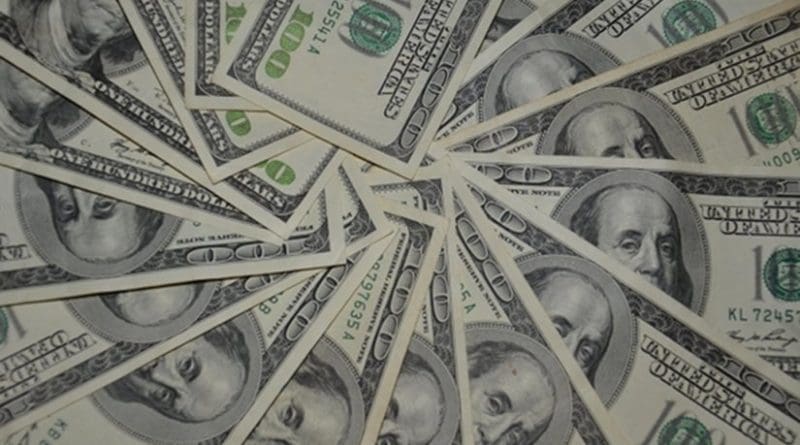Weak Consumption and Inventories Lead To Slow US GDP Growth In First Quarter – Analysis
By Dean Baker
Investment in intellectual products has been extraordinarily weak in recent quarters.
Weak consumption growth and a decline in the rate of inventory accumulation held GDP growth to just a 0.7 percent annual rate in the first quarter. This is weakest performance since the economy contracted by 1.2 percent in the second quarter of 2014.
A drop in car sales largely held down consumption, which subtracted 0.45 percentage points from the growth rate. Car sales had been very strong through 2016, so some slowing was predictable. There may be a further drop in the next few quarters due to a glut of used cars. This stems in part from subprime loans going bad and the cars being repossessed. As a result, weaker car sales could be a modest drag on growth through much of the year.
Other components of consumption were mostly stronger. Consumption of nondurable goods rose at a 1.5 percent rate. Services rose at just a 0.4 percent rate, but this was largely due to a 2.3 percent rate of decline in spending on housing and utilities. This is the second consecutive drop in this category. It reflects declining utility usage due to relatively mild weather, not any underlying economic factors.
By contrast, real health care spending rose at a 3.1 percent annual rate. Nominal spending grew at a 4.5 percent rate, somewhat faster than the 3.0 percent rate of nominal GDP growth in the quarter.
The picture on investment was somewhat better, with non-residential investment increasing at a 9.4 percent annual rate. Structure investment grew at an extraordinary 22.1 percent rate. This was likely due to the relatively mild winter in the Northeast and Midwest. Growth will be much slower or even negative in future quarters. Equipment investment grew by 9.1 percent, the strongest growth since it also grew at a 9.1 percent rate in the third quarter of 2015. Recent data on capital goods orders indicate that growth in this sector is likely to be very modest for the near future.
Nonresidential, Fixed Investment as a Share of GDP
Investment in intellectual products grew at just a 2.0 percent annual rate, following a 1.3 percent growth rate in the fourth quarter of 2016. This is a considerable slowdown from growth rates just under 5.0 percent in 2014 and 2015.
Investment as a whole has been somewhat disappointing in this recovery, but the weakness has often been exaggerated. The investment share of GDP is comparable to its levels in the decade from the middle of the 1980s to the middle of the 1990s and higher than it was through most of the last recovery.
A big factor in the weakness is that equipment investment has been depressed by the loss of manufacturing due to the trade deficit. Manufacturing accounts for a grossly disproportionate share of equipment investment. The weakness here has not been offset by growth in other sectors.
Trade was virtually a wash in the quarter, with a 5.8 percent increase in the volume of exports being offset by a 4.1 percent rise in imports (imports are roughly 20 percent larger than exports). Interestingly, the growth in service imports outpaced the growth in service exports for the third consecutive quarter.
Government spending contracted at a 1.7 percent annual rate, subtracting 0.3 percentage points from growth, with declines at both the national and state and local levels. This will be reversed in future quarters. Housing grew at a 13.7 percent rate, adding 0.5 percentage points to growth. This is also largely attributable to good weather with future quarters showing considerably slower growth.
There continues to be no evidence of accelerating inflation. The overall GDP deflator rose at a 2.2 percent annual rate, with the core PCE rising at a 2.0 percent annual rate in the quarter. In the fourth quarter the core PCE rose at just a 1.3 percent rate, so the year-over-year change is still just 1.7 percent.
While the first GDP report of the Trump administration is surprisingly weak, the underlying picture is still one of a slow growing economy. The slowdown in inventory accumulations in the quarter subtracted 0.93 percentage points from growth, with final demand rising at a 1.6 percent rate.
Inventories will almost certainly add to growth in the next two quarters. Taking this into account and the offsetting effects of weather on utility use and construction, we are likely to see growth near 2.0 percent in the next few quarters.

